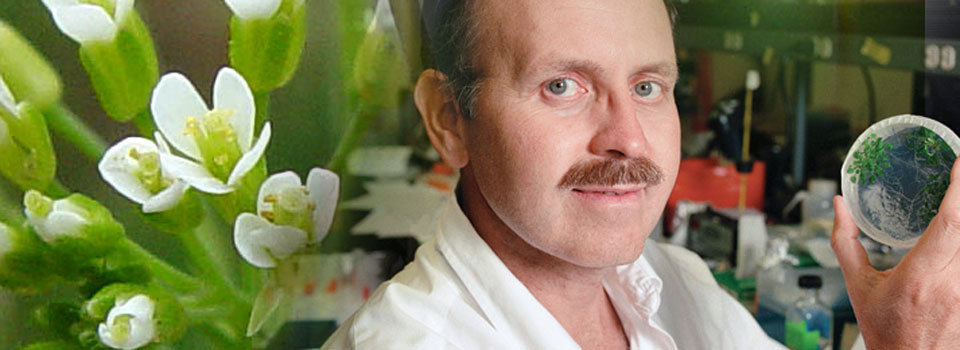There’s a moment in a scientist’s life-at least in the movies-when a virtual light bulb goes off and a new idea is born. For Richard Meagher, that moment came while listening to a colleague talk about genes used by certain bacteria to detoxify mercury.
“I sat there thinking, ‘Oh my God. I want to try to use these genes in plants,’” recalls Meagher, a distinguished research professor in the genetics department. “It was really a very rapid ‘a-ha’ moment … I could imagine a plant extracting mercury from the soil.”
That moment was in 1978, and since then Meagher has become a pioneer in a field known as phytoremediation, the technique of using plants to clean up contaminated soils. The science of getting the right genes into the right plants and then getting the plants to express those genes has been tricky at times. It wasn’t until 1996 that Meagher was able to produce evidence that his idea worked.
In addition to using plants to clean up mercury, he’s also been able to turn a member of the mustard family into a vacuum cleaner that can draw arsenic from the soil. The plant, known as Arabidopsis, sucks up arsenic, which seeps into water supplies and slowly poisons millions of people worldwide.
“We’ve already got this working,” Meagher says. “What we’re doing now is trying to make it work better so that we can make the process as efficient as possible.”
Big ideas are often met with resistance, however. At times, finding research funding was more frustrating than the science of modifying the plants and demonstrating that they work, Meagher says.
“I wrote 20 phytoremediation grant proposals between 1978 and 1995 before I was funded,” he says. “In my other research areas, I was running a 70 to 85 percent success rate. But in phytoremediation, I was running zero out of 20.”
With support from the U.S. Department of Energy, Meagher has now hit upon a six-gene combination for Arabidopsis that pulls enough arsenic out of the soil-more than one percent of the plant’s dry weight-to make the process cost effective. Once the the plants have removed the arsenic from the soil, Meagher can harvest and dispose of them safely.
Arabidopsis is a good plant to study because it grows quickly and its genes are well known, but Meagher is now seeking plants that aren’t as likely to be eaten by animals or people. A good candidate, he says, are castor beans, which animals and humans avoid because they are naturally poisonous.
He’s also trying to make the process not just cost effective but profitable, perhaps by incorporating the genes into switchgrass, which has the potential to be converted to biofuel more efficiently than castor beans. The idea is to create a financial incentive for farmers to clean up the environment.
There are 15 contaminated sites in Georgia-and hundreds nationwide-that could benefit from Meagher’s work. But phytoremediation may have the greatest impact in India and Bangladesh, where naturally occurring arsenic in the soil seeps into unlined wells that supply drinking water. Over time, the contaminated water causes skin lesions and, eventually, cancer.
“An estimated 400 million people in India and Bangladesh are drinking contaminated water,” Meagher says. “It’s a serious problem, and phytoremediation is a relatively simple solution.”


